Aviation
KLM’s new flight safety film inspired by Delft Blue craftsmanship.


KLM’s new flight safety film inspired by Delft Blue craftsmanship
Being a leader in aviation safety, it is our top priority to care about every detail of your flight safety. Clear on-board safety instructions are an important element of our flight safety procedure. Starting 1 November, we will introduce a striking new flight safety film on all of our intercontinental flights.
The film is inspired by the techniques used by the famous Delft Blue artisans. We cherish the craftsmanship of this Dutch art because every detail is painted with care. At KLM we conduct our safety process with the very same eye for detail.
Creating a film that grabs and holds the attention of every passenger is important to us, while putting a smile on your face. That’s why we created something special for you
At KLM we care about every detail of your flight safety
The authentic hand-crafted flight safety film emphasises the amount of detail that KLM puts into a subject as important as flight safety. All the tiles used in the film were drawn, animated and painted with extreme care. The cabin attendant who modelled for the artisans is al KLM cabin attendant. The voice-over in the film is done by the very same cabin attendant.
Thousand Delft Blue tiles
It took a lot of effort and different skills before the cabin attendant came alive in our new flight safety video. First the entire mandatory safety script was translated into a series of detailed, hand-drawn, Delft Blue illustrations.
All these illustrations were sent to a digital animator. He turned the hand-drawn illustrations of the complete safety process — including all her movements — into separate, animated frames. All the printed frames were sent back to the illustrators. They re-painted every single frame in the characteristic Delft Blue style. Finally, artisans painted over a thousand Delft Blue tiles. By photographing every tile using the stop-motion technique, a unique flight safety film was born.
Delftware and Delft Blue
Delft Blue is rooted in Dutch national heritage. The world-famous Delftware has a rich and long history which goes back to the early 1600s. The Dutch East India Company (VOC) ships brought back spices from the Far East and large quantities of porcelain China. The porcelain became very popular among affluent families such as the European Royals.
When civil wars in China made it too difficult to import, the Dutch potteries seized the opportunity to develop their own version of the blue-and-white porcelain. This was the start of the Dutch Delftware industry which is now known internationally as a typically Dutch product. Of the approximately thirty-two potteries founded in the seventeenth century, Royal Delft is the only Delftware factory left in Delft.
Inspired by the Royal Delft factory
For this movie, we drew inspiration from the Royal Delft factory. The Royal Dutch Delftware Manufactory, established in 1653, is the last remaining Delftware factory dating from the seventeenth century. Here, the world renowned Royal Delftware is still entirely hand painted according to centuries-old tradition. For more information: http://www.royaldelft.com
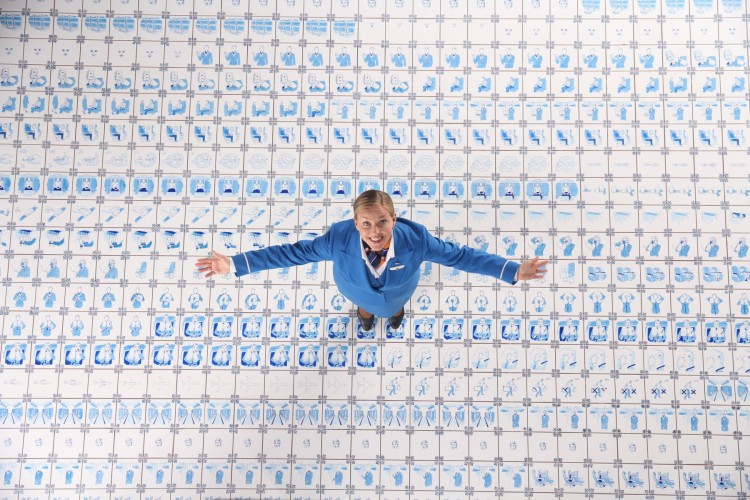
Delftware craftsmanship
KLM’s new flight safety film features more than 1,000 tiles, specially drawn, animated and painted with the utmost precision for this specific purpose. The entire script was first translated into handmade Delftware drawings, which were then painted onto the tiles. Stop-motion video animation was then used to film KLM’s flight safety instructions for passengers, tile by tile.
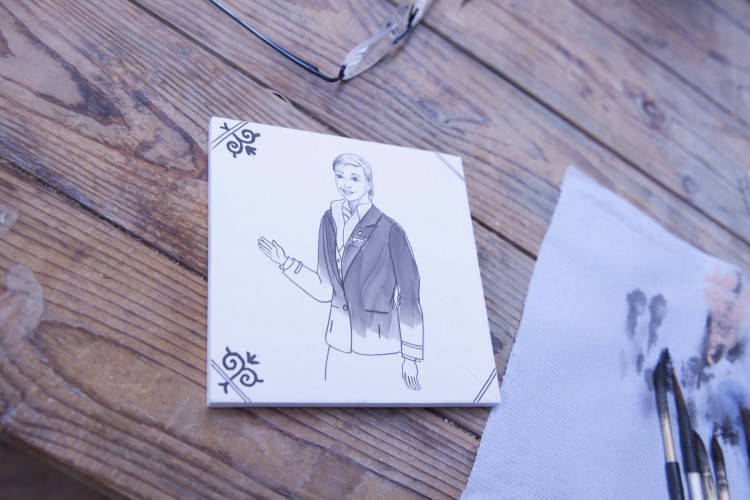
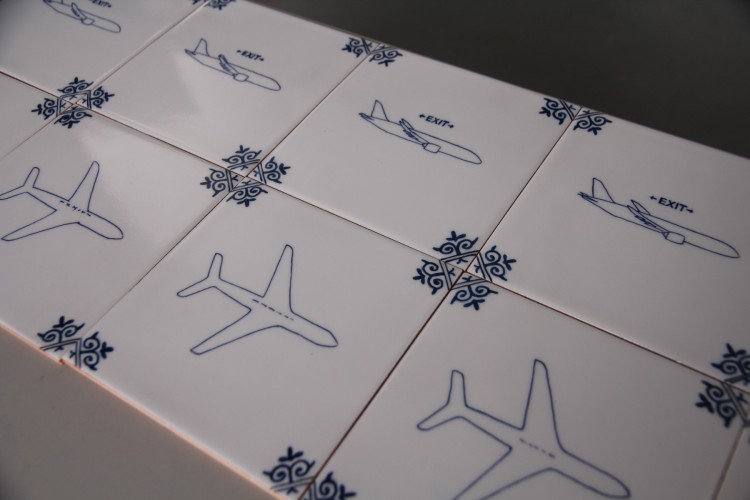
Delft Blue houses
Since 1952 every KLM World Business Class passenger has received a miniature Delftware house as a gift on each intercontinental flight she or he takes. Today KLM’s collection of Delftware houses spans ninety-six models. The Delft Blue miniature houses are copies of real houses. All have a historical significance and can be found all around the Netherlands..
Tasty Blue
Tasty Blue is a new catering concept which we plan to roll out this autumn. Inspired by Delftware, this concept aims to bring a touch of design to the dining experience on board. The new service is based on the concept of a set table. On board you will find trolleys, paper tray mats, tableware covers, paper boxes and cups bearing Delft Blue details or Delftware elements.
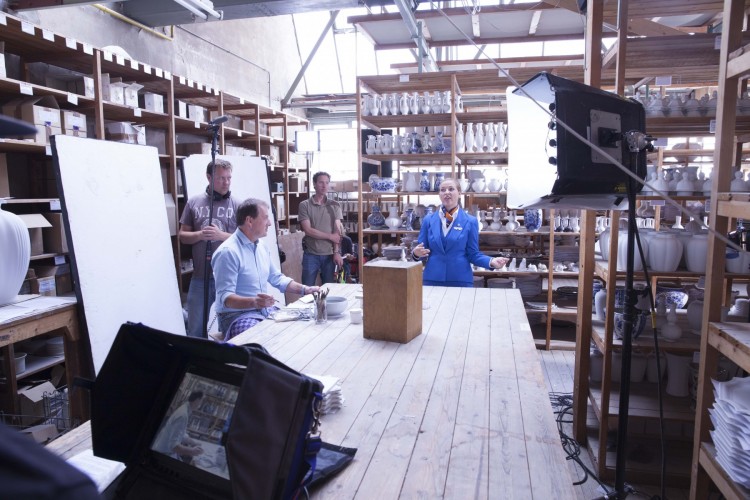
Dutch design
Just like the new flight safety film, KLM’s new Economy Class catering concept “Tasty Blue” was also inspired by Delftware design. The trolleys, placemats, cutlery sleeves, paper boxes and cups all feature Delftware details or elements. This ties in perfectly with KLM’s Delftware miniature houses, which have been presented to World Business Class passengers since the 1950s. The World Business Class tableware and new interior of the fleet were also created by Dutch designers. In addition, KLM has a long tradition of serving its World Business Class passengers meals created by leading Dutch chefs. In so doing, KLM reaffirms its pride in its Dutch roots and international allure.
The flight safety film and as well as the “making of” can be viewed at klm.com/flightsafety. The film and the Delftware tiles will also be on display at the Dutch Design week in Eindhoven from 17 to 25 October.
https://youtu.be/BTitrKvP64s
The safety instructions are updated in line with the latest rules and regulations.
Liked it ..?
Share with your friends and family

Aviation
Lost Tool Found in Qantas A380 After 34 Flights
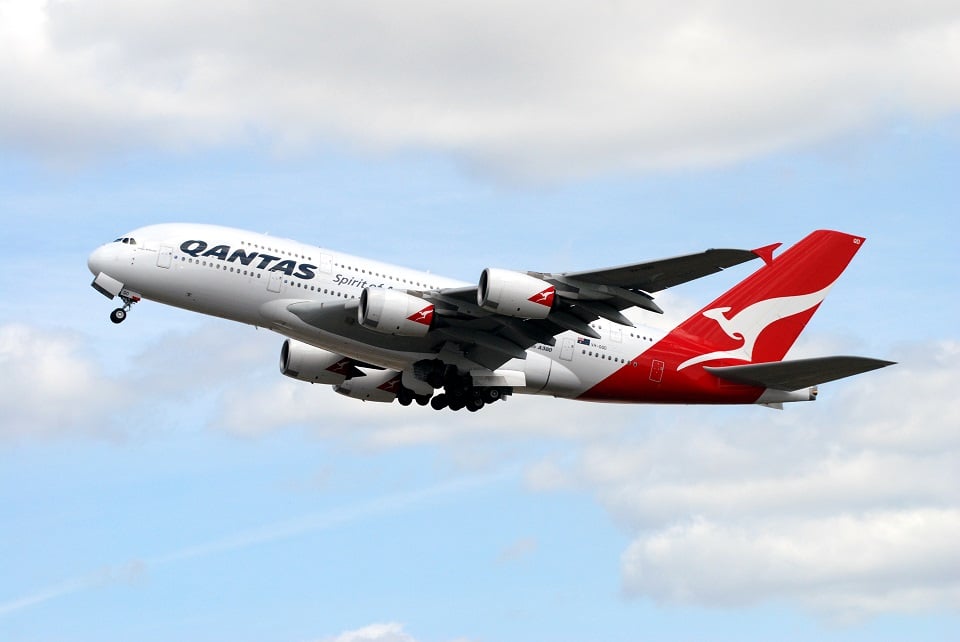
An Australian Transportation Safety Bureau (ATSB) investigation recently revealed that a Qantas A380 operated 34 flights with a 1.25-meter nylon tool lodged in one of its engines.
This turning tool, used during borescope inspections to rotate the intermediate-pressure compressor, was left behind during scheduled maintenance at Los Angeles on December 6, 2023. It remained inside the engine until it was discovered by maintenance staff during a subsequent check at Los Angeles on January 1, 2024.
China Takes the Lead in Sixth-Generation Fighters with White Emperor B
The ATSB report highlights two critical lapses. First, maintenance engineers failed to notice the tool during final checks for foreign objects after the borescope inspection. Second, the lost tool procedure was not activated when the tool was identified as missing.
The certifying engineer ultimately cleared the aircraft for service without accounting for the misplaced tool. During the time qantas films the tool was inside, the A380 completed 34 flight cycles, accumulating nearly 294 hours without any noticeable effect on engine performance.
Although the tool was deformed by high-energy airflow within the engine, there was no reported damage to the engine itself. ATSB Chief Commissioner Angus Mitchell commented.
India’s C-295 to Gain Advanced Weapons for Maritime Surveillance
“This incident underscores the importance of following established maintenance protocols. Engineers missed the tool during foreign object checks, and the required lost tool procedure wasn’t started after realizing the tool was missing.”
Following the investigation, the airline issued a safety directive, urging all engineering and tool storage teams to adhere strictly to these protocols to prevent similar incidents in the future.
A qantas spokesperson stated, “While the tool didn’t impact engine performance, we take this incident very seriously. It is critical to follow the correct lost tool procedures.”
-

 Aviation2 months ago
Aviation2 months agoBoeing confirms 797: A New Era for Mid-Size Aircraft
-

 Aviation2 months ago
Aviation2 months agoMicrosoft Flight Simulator Raises $3 Million to Bring Back the An-225 Mriya
-

 Aviation2 months ago
Aviation2 months agoLockheed and Tata Team Up to Build C-130J MRO Facility in India
-

 Airlines2 months ago
Airlines2 months agoQantas Engineers Stage Walkout Over Cost of Living Concerns
-

 Airlines2 months ago
Airlines2 months agoQatar Citizens Can Travel to the United States Without a Visa
-

 Aviation2 months ago
Aviation2 months agoBoeing Offers 25% Pay Increase & Promise to Build Next Plane in Seattle
-

 Aviation2 months ago
Aviation2 months agoQatar Airways bans these new Electronic Devices on plane
-

 Airlines2 months ago
Airlines2 months agoEmirates Ends 28-Year Singapore-Melbourne Fifth Freedom Route








